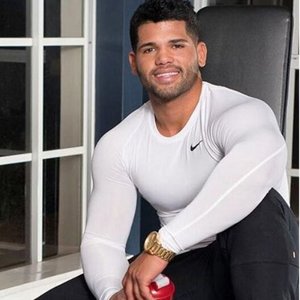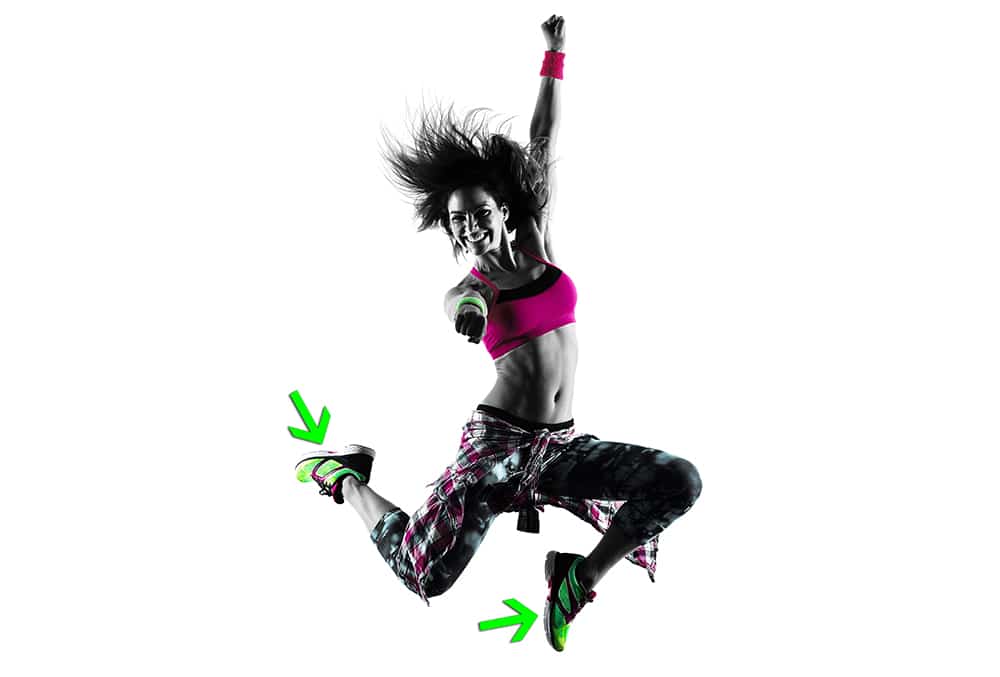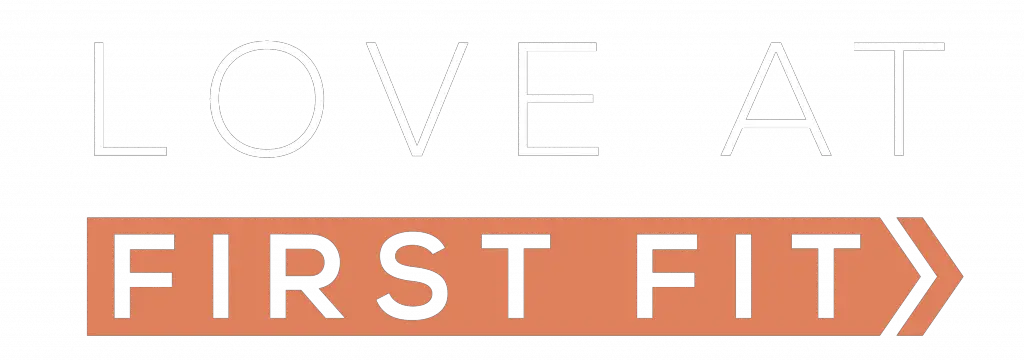Zumba started its journey towards the fitness craze in 1998 when Beto Perez began incorporating Latin dance moves into his aerobics classes. The energetic workout includes, but is not limited to, side-to-side or front-to-back movements from Salsa, Reggaeton, and Cumbia, as well as the quick-stepping motions of Samba and Merengue, combined with lots of hip and arm movements. The classes are medium to high impact and include jumping, bouncing, and twisting.
Because different shoes are designed to withstand and support various movements, it’s essential to make sure that you choose the best possible shoe for the activity you are doing. You need information about the shoe support, as well as the typical movements involved in the action.
You are probably hoping to use your current pair of cross-trainers at your Zumba class or buy the most versatile pair of shoes to get the most bang for your buck.
Are Cross-Training Shoes Good for Zumba?
Cross-training shoes are an excellent choice for Zumba because they provide grounding with thinner soles, lateral movement support that other shoes do not, and durability of materials that will last for many workouts. However, an athletic dance shoe could be the best overall option for Zumba.
For anyone who may be tempted to wear an old pair of running shoes to class, there are many reasons not to do this. The wrong footwear can potentially increase your risk of being injured during Zumba.
There are many things to take into account when deciding if a cross trainer is the right choice for your Zumba class, not limited to design, support, and injury prevention, and you owe it to yourself to make an informed decision.
Why Are Cross Training Shoes Good for Zumba?
As with any fitness class, there is a risk of injury if you don’t have the appropriate gear. Fortunately, cross trainers do have qualities that make them an excellent choice for your Zumba footwear.
First and foremost, cross trainers are built to support lateral, or side-to-side, movement. They are shoes that are made to be used across a variety of different types of workouts, and must accommodate many different movements. Because of this, they are an excellent option for the many different steps incorporated into a Zumba workout.
Cross trainers are designed for stability and grounding. They have thin soles, which may be less cushioned than other shoes, but overall allow you to find balance and dexterity as you bounce and twist through your Zumba class. They don’t have a thick tread, which would create a clunkier shoe that has more grip – something you do not want for a Zumba workout.
Finally, their support and cushion is concentrated into the front of the shoe, which can allow for more stability towards the front of the shoe – something that the American Academy of Podiatric Sports Medicine recommends.
Additionally, cross trainers are also made of durable materials, as they are meant to stand up to the tests of multiple exercises. With all of the movements incorporated into a Zumba class, a cross trainer could potentially outlast a less durable shoe choice.
Cross Trainers vs Dance Shoes for Zumba
When deciding between cross trainers vs dance shoes for your Zumba class, you should also look at athletic dance shoes. They are sometimes recommended for Zumba, as Zumba is a fitness class that involves lots of dance moves.
Athletic dance shoes have special features, such as a split sole, that can make the shoe more flexible, and are overall constructed for the many movements dancing requires. Here we compare cross trainers and athletic dance shoes in some of the most important areas of design and support.
As you can see in this cross trainers vs dance shoes table, cross trainers and dance shoes are both designed for lateral and multi-directional movement. They are both light on the tread, allowing for safer twisting and turning motions. They are also both durable and made to work hard.
Where they differ, athletic dance shoes are more flexible, as they tend to be built with a split sole. They are designed with dancing in mind, whereas cross trainers were created as a versatile shoe that is expected to be used across a variety of activities.
Athletic dance shoes are designed to be lightweight, and while cross trainers aren’t exactly heavy, their material was chosen for durability, and not as lightweight as possible.
While both have pros and cons, if you are looking for a shoe that will be useful across multiple workout classes and activities, the cross trainer might be the way to go.
Athletic dance shoes, while potentially not adaptable to other fitness activities, do provide the full range of support and design to keep you as safe as possible while enjoying your Zumba class.
Overall, cross trainers remain a fantastic contender as a versatile and responsible choice for Zumba. Because they are designed for versatility, they make a cost-effective choice without restricting your movements or putting yourself in a position to be injured in your Zumba class potentially.
Cross trainers are built to support multi-directional movement, including lateral movement, and provide stability for a variety of exercises. As such, they support the many twists, turns, bounces, and many steps that are incorporated into Zumba classes, and remain a solid choice for your workout.
What to Look for in Cross Training Shoes for Zumba
Many different types of Zumba classes have developed over the years, and each offers a different intensity level. Depending on your age and level of fitness, you will probably be able to find a class that suits you.
It is especially important to find a shoe with the correct supports, such as a cross training shoe if you are going to a more high intensity Zumba class such as Zumba Toning. Zumba Toning incorporates toning sticks and functions as strength training in addition to cardio.
Regardless of intensity, whether you are doing Zumba Toning, or Zumba Gold (a class designed for beginners or older people), the many different combinations and types of movements means your shoe choice can potentially make or break your experience. It is especially important to note the lateral movements involved in Zumba, and how essential it is to find a shoe that supports you while you’re moving from side-to-side.
Running shoes, for example, are typically designed for forward motion only, and won’t support the quick side-to-side movements that Zumba involves. Additionally, you will want to be supported in any twisting or turning you have to do.
The American Academy of Podiatric Sports Medicine recommends that, for any aerobics class, you find a shoe that is made specifically for that activity. Typically, athletic dance shoes are recommended for aerobic dance classes, because they are designed with the needs of a dancer in mind, such as shock absorption, flexibility, and multi-directional movement support.

Austin is the author of loveatfirstfit.com and a personal trainer with extensive knowledge in nutrition. Austin is passionate about helping others to find a suitable healthy lifestyle and feel good about themselves. Austin’s goal is to help people push their limits and achieve their physical performance.

